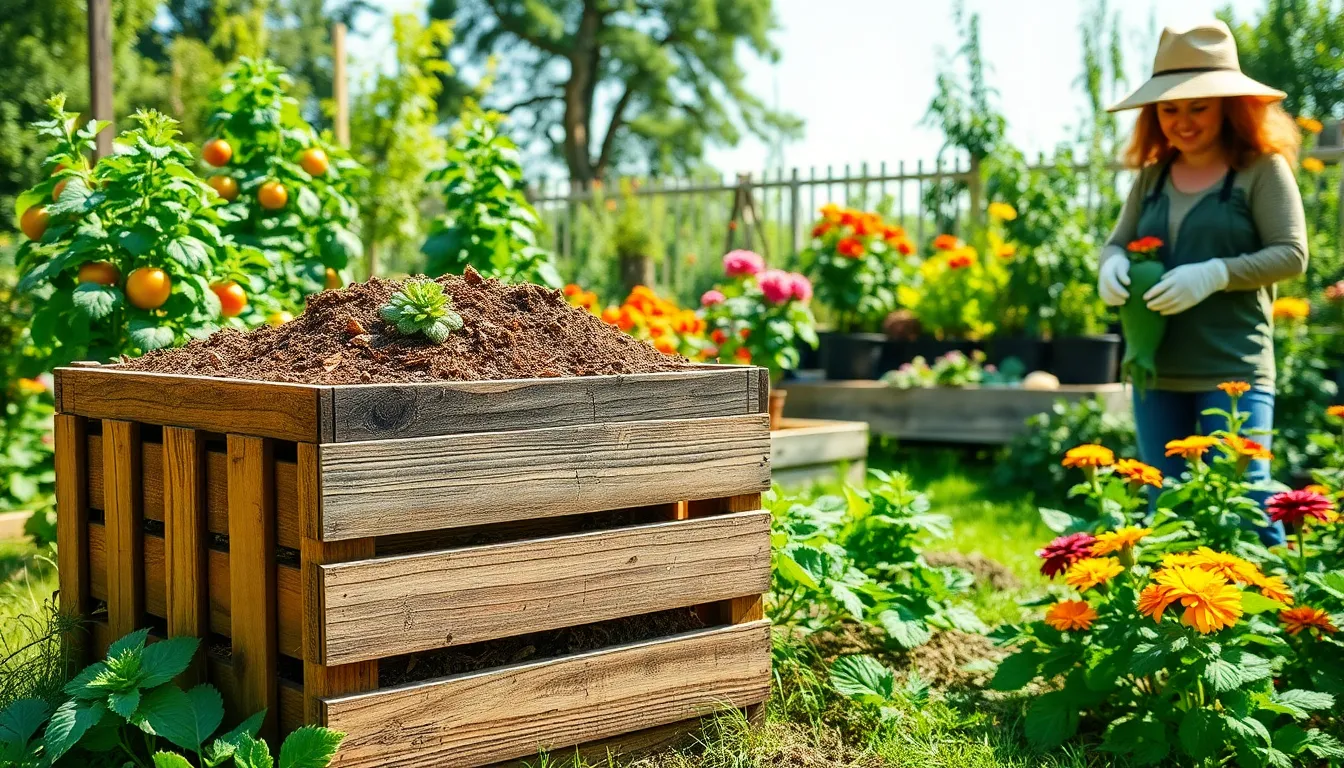Imagine transforming your garden into a thriving ecosystem of vitality and freshness, all beginning with the simple act of composting. Whether you’re just starting out or have years of experience under your belt, mastering the art of composting can elevate your gardening game to new heights. In this guide, “Tips For Start A Compost Pile,” you’ll discover the secrets to creating rich, crumbly compost that will energize your plants and invigorate your soil, turning your garden into a paradise of color and growth.
For both novices and seasoned green thumbs, composting offers a practical, rewarding way to recycle kitchen scraps and garden waste into nature’s finest fertilizer. This list of tips will not only help you establish a successful compost pile but also boost your confidence in nurturing a sustainable garden environment. With each layer you add, you’ll be building a foundation for healthier plants, reducing waste, and contributing to a more sustainable world. So dive in with enthusiasm, and watch as your garden comes to life with the joys and rewards of successful composting.
Choose a Convenient Compost Spot
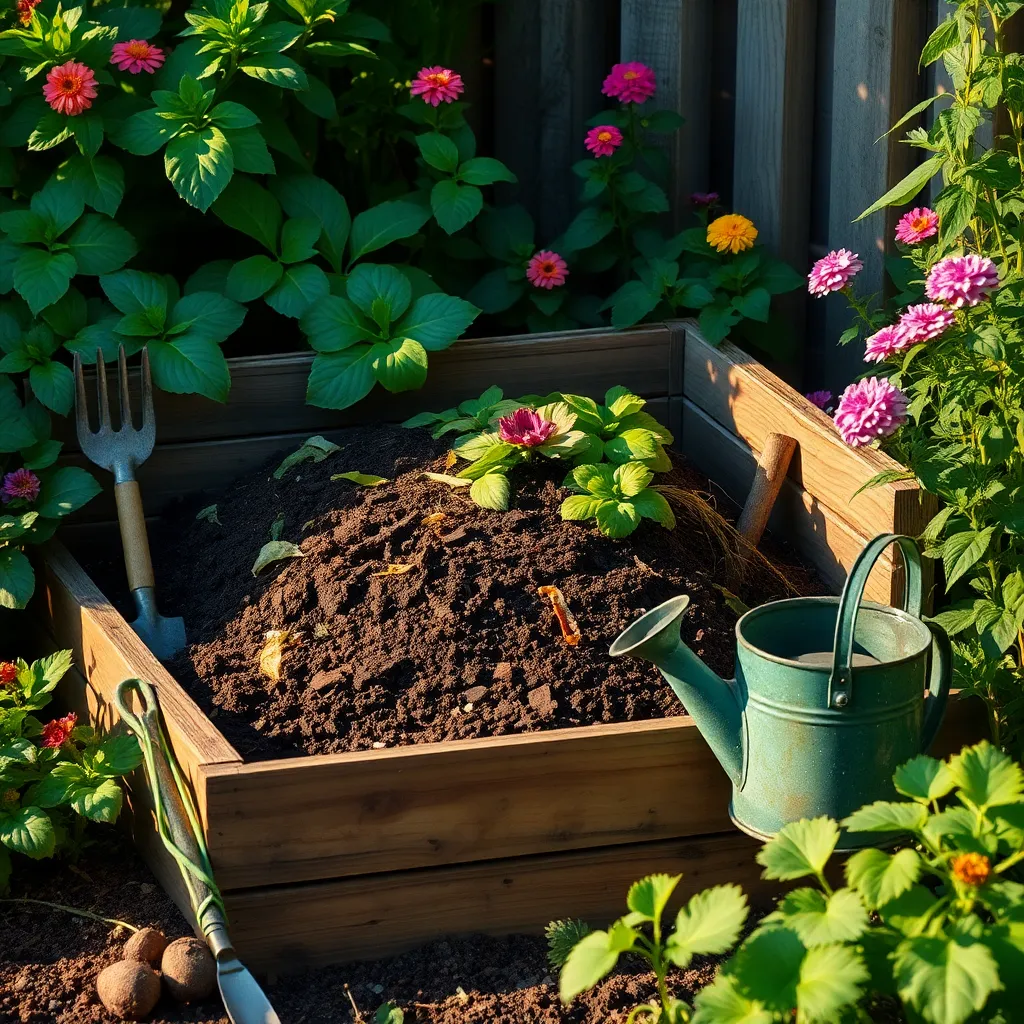
Choosing the right spot for your compost pile is crucial for its success. Look for a location that is convenient yet discreet, blending functionality with aesthetics in your garden.
Avoid placing your compost pile too far from your garden or kitchen to make adding materials easy. Ideally, find a spot that is close to a water source, as keeping the compost moist is essential for decomposition.
Consider the sun exposure in the selected area; partial shade is often best. Too much sun can dry out the compost, while too little can slow down the decomposition process.
Ensure the area you choose has good drainage to prevent water from pooling around your compost pile. This helps maintain the right moisture balance, which is crucial for breaking down the organic material efficiently.
Layer Greens and Browns Alternately

To create a thriving compost pile, it’s essential to layer greens and browns alternately. Greens, like vegetable scraps and grass clippings, provide nitrogen, while browns, such as dried leaves and cardboard, offer carbon.
Start with a layer of browns to help with drainage and aeration, followed by a layer of greens to add moisture and nutrients. Aim to maintain a balanced ratio, ideally two parts browns to one part greens, ensuring an efficient composting process.
Mix the layers gently to enhance air circulation, which speeds up decomposition and reduces odors. Beginners may find it helpful to use a pitchfork or shovel to turn the pile every few weeks, which keeps it well-aerated.
For more advanced composting, consider adding a layer of soil between the greens and browns to introduce beneficial microbes. These microbes accelerate decomposition, resulting in richer compost that can boost your garden’s fertility.
Keep Compost Moist, Not Soggy
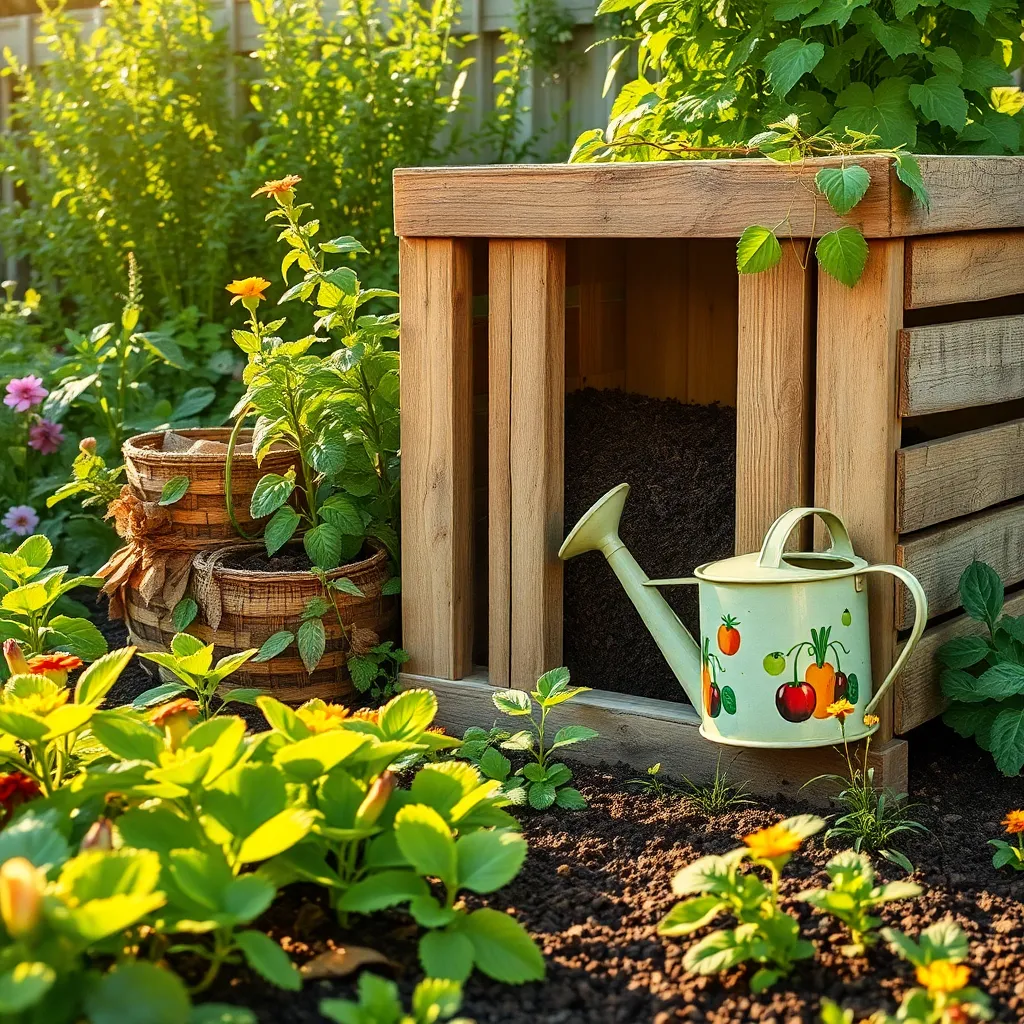
Maintaining the right moisture level in your compost pile is crucial for effective decomposition. Think of your compost like a wrung-out sponge; it should be moist but not dripping with water.
To achieve this balance, regularly check your compost’s moisture level by squeezing a handful of material. If water drips out, it’s too wet, and you can add more dry “browns” like straw or shredded newspaper to absorb the excess.
Conversely, if the compost feels dry and crumbly, it’s time to add some water. Use a garden hose or watering can to gently moisten the pile, aiming for even distribution without soaking it.
For those with more experience, consider covering your compost with a tarp during heavy rains to prevent it from becoming waterlogged. Additionally, turning your compost every few weeks can help redistribute moisture and accelerate the breakdown process.
Turn Pile Regularly for Aeration
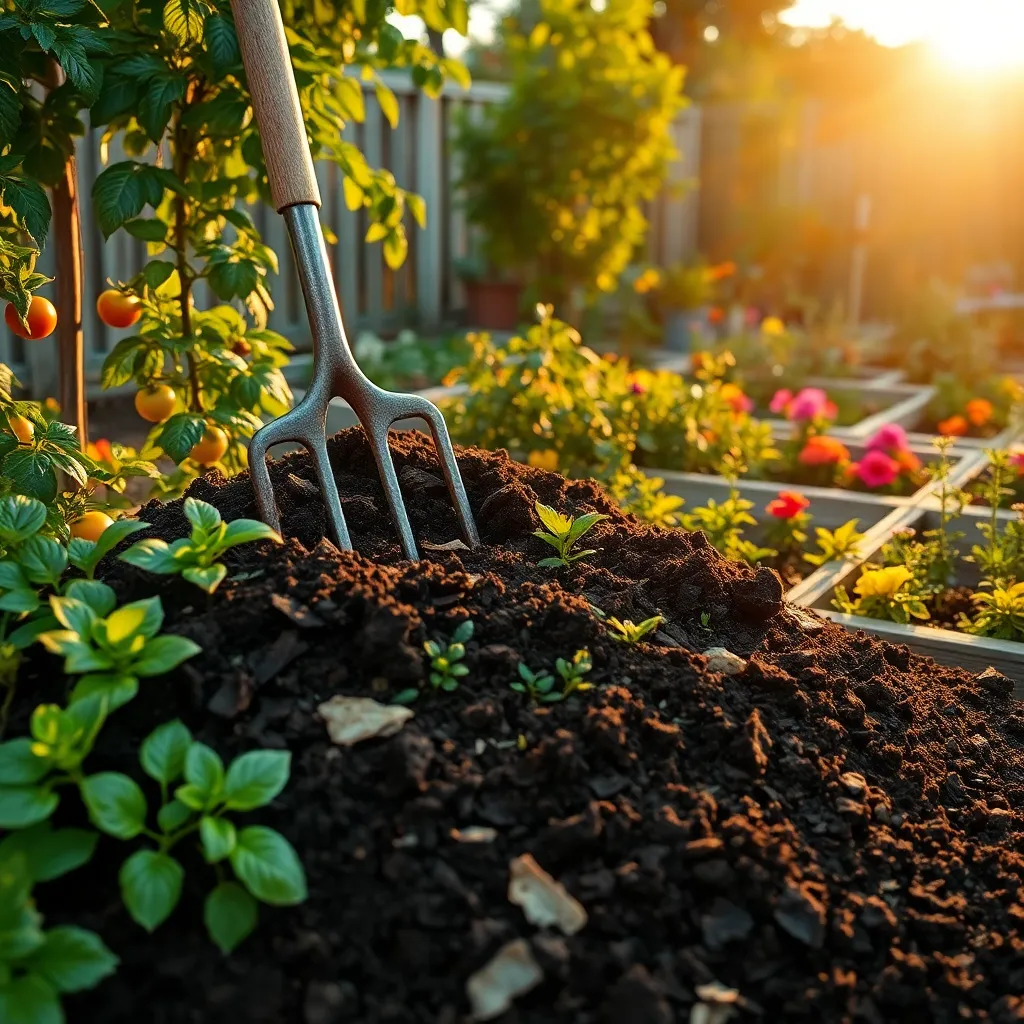
Regularly turning your compost pile is essential for maintaining proper aeration, which is crucial for the decomposition process. By doing this, you ensure that oxygen reaches the microorganisms breaking down the organic material, speeding up the composting process.
To effectively turn your pile, use a pitchfork or a compost turner. Aim to rotate the materials from the outside of the pile to the inside, where temperatures are higher, to ensure even decomposition.
Turning the pile every one to two weeks is a good practice for most gardeners. However, if your compost pile is larger or contains dense materials like grass clippings, more frequent turning might be necessary to prevent compaction.
For advanced composters looking to optimize, consider the moisture content as you turn. If the pile feels dry, add a little water as you turn; if it feels soggy, add dry brown materials like leaves or straw to absorb excess moisture.
Monitor Temperature for Decomposition
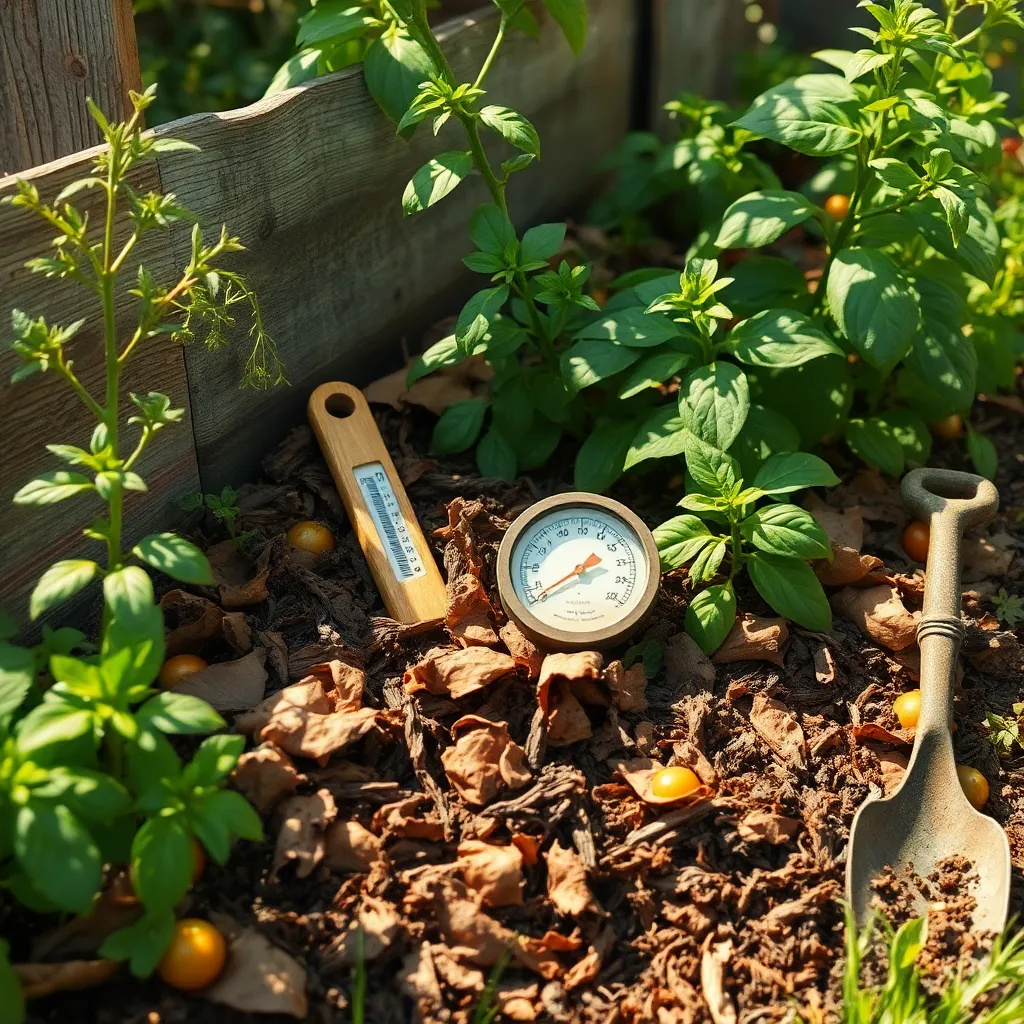
Monitoring the temperature of your compost pile is crucial for effective decomposition. Ideally, the internal temperature should range between 135°F to 160°F (57°C to 71°C) for optimal microbial activity.
Use a long-stemmed compost thermometer to check the temperature regularly. Insert it into the center of the pile, where the readings will be most accurate.
Maintaining the right temperature ensures that your compost pile is breaking down efficiently and killing off weed seeds and pathogens. If the temperature drops below 110°F (43°C), consider adding more green materials or turning the pile to increase oxygen flow.
On the flip side, if your compost gets too hot, it may slow down the decomposition process. In such cases, blend in more brown materials, like dried leaves or shredded newspaper, to regulate the temperature.
For beginners, keeping a simple log of temperature readings can help track changes and improvements in your composting. Advanced gardeners might use this data to experiment with different materials to tweak their composting recipe.
Conclusion: Growing Success with These Plants
In nurturing your relationship, much like starting a compost pile, attention and care yield fruitful results. This article covered five key concepts: the importance of consistent communication, the need for patience and time to nurture growth, the value of understanding each other’s unique needs, the power of compromise in creating a balanced environment, and the role of shared goals in fostering a harmonious partnership. Each of these principles is crucial in cultivating a thriving relationship.
As an actionable next step, take a moment today to initiate a meaningful conversation with your partner, focusing on one of these concepts. Whether it’s discussing a shared goal or understanding each other’s perspectives, this step can help strengthen your bond.
Remember, healthy relationships are built on continuous effort and understanding. Bookmark this article to revisit these essential tips whenever you need guidance or a relationship boost. By saving this resource, you equip yourself with the tools to nurture a resilient partnership.
Looking ahead, embrace these strategies with enthusiasm and dedication, and you’ll set the foundation for enduring relationship success. Your commitment today can lead to a flourishing, fulfilling connection tomorrow.

